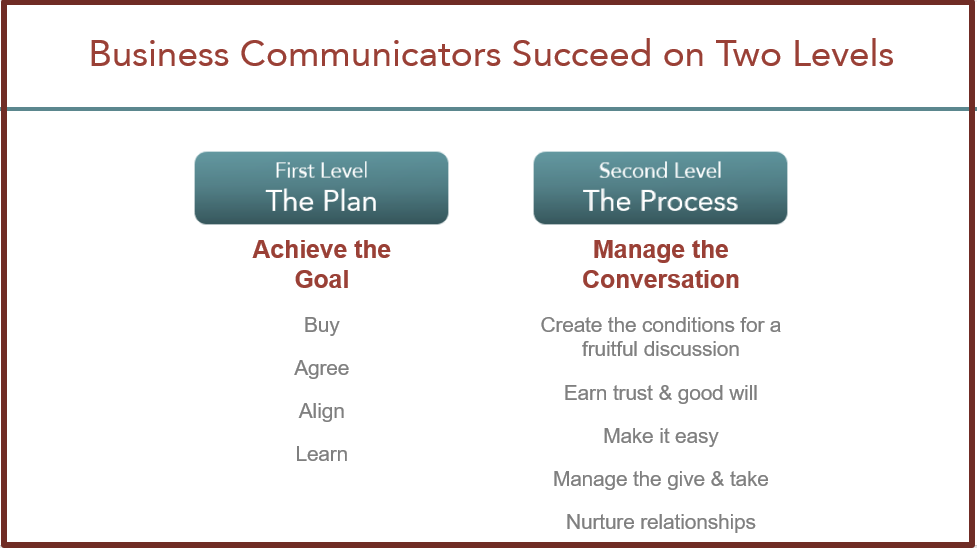
- Dale Ludwig Presentations
Your success as a business presenter always exists on two levels.
- On one level, it is determined by whether the stated goal of the presentation is reached. Did the buyer agree to buy, for example. Or, did your team see the need for the new procedure you’re asking them to follow? This type of success is fairly easy to measure.
- The other level of success is more difficult. It is a measure of how effectively you managed the process of presenting. Or, as we look at it, did you manage the conversation in an appropriately orderly fashion?

The second level of success often determines the first. I’m sure there are times when a poorly managed presentation achieves the goal it was intended to reach. But when you consider how the process felt to the audience—frustrating, inefficient, a waste of time—such a presentation can hardly be considered a complete success.
Presenting is Part of Your Everyday Work
The thing we need to remember is that presentations are part of everyone’s day-to-day work. So when presenters fail to manage the process well, they’re making it difficult for audience members to do their jobs. When that happens, audience members are stuck. After all, they are captive. They don’t have the option of walking out or flipping to a new channel. So what they often do is silently disengage. They might feel a sudden need to check their email or think about dinner, doing whatever they can to cope with a bad situation.
Most of the time, this reaction has little to do with the goal of the presentation (level 1) and everything to do with whether the presenter is managing the conversation effectively (level 2).
For example, if you’re delivering market research to a group of sales people, your audience wants to understand the research, but they also want you to make understanding it easy. That level of success goes beyond the information itself. It involves:
- Emphasizing context and relevance
- Providing perspective
- Leaving out information that isn’t useful to your audience (whether you want to or not)
- Caring about their understanding and buy-in
- Being responsive to the in-the-moment needs of the audience
Business presentations are a collaborative process. Pulling your slides together and having a specific goal is only the first step, and that step alone will never guarantee success. A successful presentation is one in which the audience and the presenter work together in a fruitful, efficient process.

